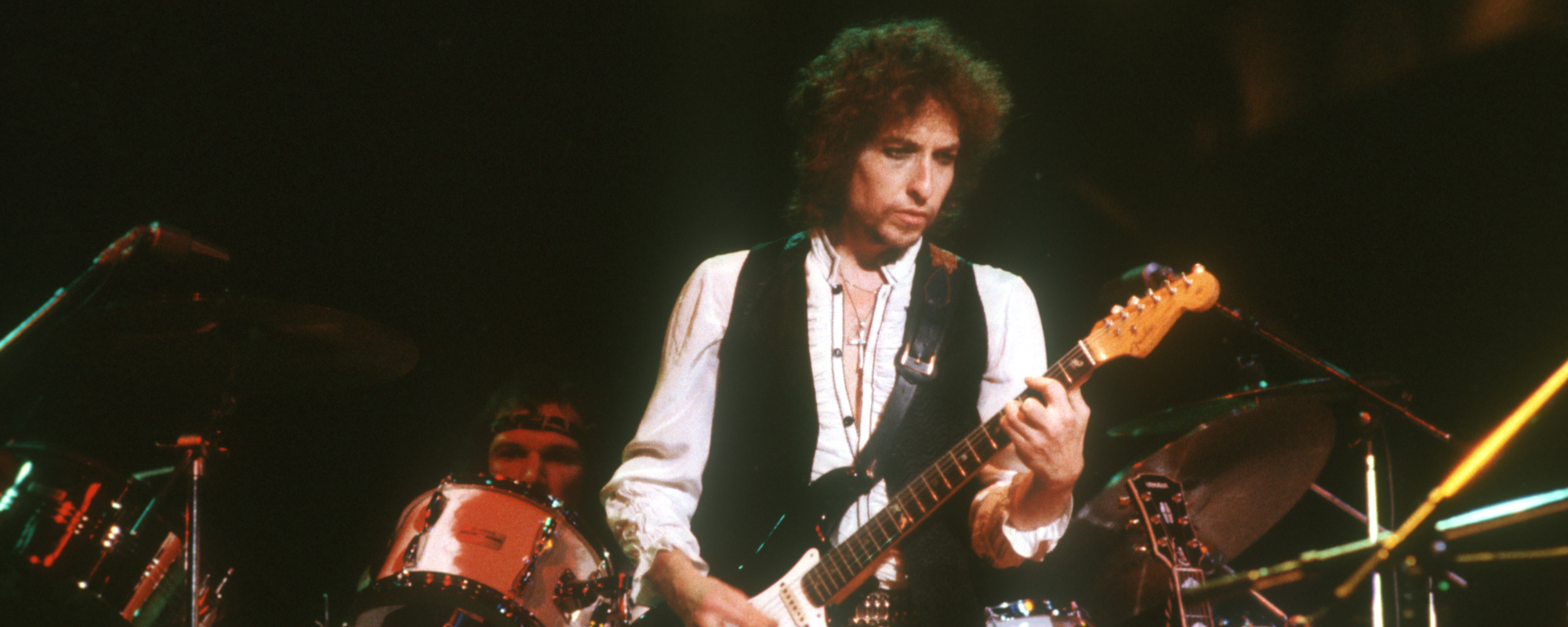Bob Dylan hit a songwriting peak in the mid-1960s that might just be unrivaled in the history of popular music. Writing and recording at a blistering pace, pushing the boundaries of what lyrics could be with every new song that came down the pike, his inspiration and innovation were simply unmatched.
Videos by American Songwriter
You could make a case “Desolation Row” is the quintessence of that particular moment in time for Dylan’s career. The song hinted at the surreal with its descriptions of the events taking place on a fantastic, frightening street, yet it very much held up a mirror to humanity, in all its splendor and frailty.
Devising “Desolation”
Highway 61 Revisited, released in August 1965, was the second of three albums Bob Dylan released in a span of about 15 months. This trio of records featured the artist adding electric instruments to his musical approach. The move shocked many of his folk music fans, but Dylan knew his lyrical horizons were expanding, and he needed the music to match that ambition.
But it’s a misconception that Dylan was only turning out raucous, rock and roll-flavored tracks during this time. There was actually great variety on those records. Bringing It All Back Home, released in early ’65, is half acoustic, while Blonde on Blonde, the double album he unleashed in 1966, features a heavy dose of ballads.
Highway 61 Revisited probably rocks the hardest of the three, but even that one is balanced by softer moments. “Desolation Row,” tucked in at the back of the album, features just Dylan’s rhythm acoustic guitar accompanied by Charlie McCoy’s Spanish-style guitar fills and Russ Savakus’ bass. Dylan brings in his harmonica at the very end as well.
As for the inspiration, Dylan was likely fueled by long, hallucinatory poems of the era, such as his friend Allen Ginsberg’s “Howl.” But he veered off from that template with his playful reimagining of historical and literary characters, using them as stand-ins for people whom he either knew or encountered. In doing so, he was making rather pointed commentary on the absurdity of life and the machinations of the people going through it.
Examining the Lyrics to “Desolation Row”
Dylan borrowed some of the various events that take place in “Desolation Row” from history. Right off the bat, the opening line (They’re selling postcards of the hanging) referenced an actual lynching that took place in his home state of Minnesota many years before, an event that was indeed memorialized on postcards. It’s a striking example of the chaos and nonsensical behavior Dylan is about to depict for 10 verses and more than 11 minutes of running time.
There is occasionally poetic beauty in the language that he uses, with eloquent, mellifluous lines like, Between the windows of the sea where lovely mermaids flow. And there is comic excess, as demonstrated by the blind commissioner: One hand is tied to the tightrope walker / The other is in his pants.
As for the allusions to characters real and fictional, Dylan uses them sometimes as hints, sometimes as misdirection. At times, the street he describes is a nightmarish place, full of mayhem, violence, and people looking out for only themselves. And yet, the denizens can’t seem to completely leave it behind: Though her eyes are fixed upon Noah’s great rainbow / She spends her time peeking into Desolation Row.
Through it all, the narrator can see it all, but we might assume for most of the song he’s nothing more than an objective onlooker. But in the final verse, Dylan switches to the first- and second-person perspective, as the narrator responds to a letter from a friend or lover. He hints at his power as a writer to distort reality, if only because the truth is too painful: All these people that you mention / Yes, I know them, they’re quite lame / I had to rearrange their faces / And give them all another name.
What’s never quite clear is if this guy sees “Desolation Row” as a horrible fate to be avoided or a warts-and-all home. In any case, Bob Dylan gave us so much to think about and ponder when he delivered this epic, as he created a single avenue as vast and inexplicable as the whole world.
When you purchase through links on our site, we may earn an affiliate commission.
Photo by Michael Ochs Archives/Getty Images













Leave a Reply
Only members can comment. Become a member. Already a member? Log in.